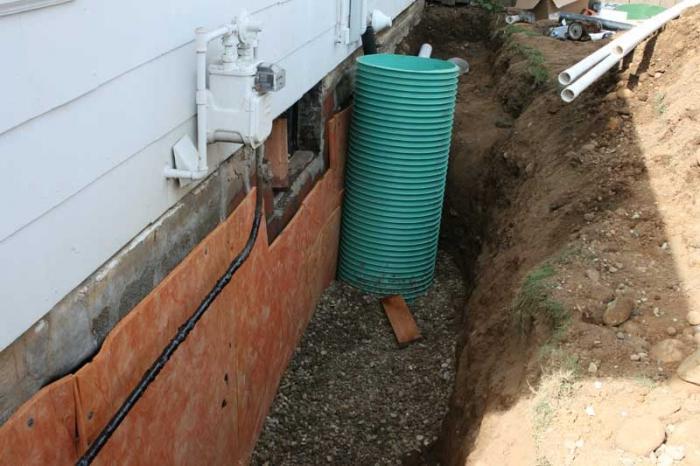Waterproofing the foundation of the house is necessary, as it not only increases the suitability and service life of the building, but also ensures optimal humidity inside the building, especially on the ground floors. Therefore, it is necessary to take a responsible approach to housing design, understanding how important the proper waterproofing of the foundation of the house is. The moisture of ground and sedimentary waters is absorbed by the foundation and, in the absence of insulating materials, penetrates the house through the walls, which causes their destruction and favors the appearance of fungus and mold. In winter, during thaw and frost, water turns into ice and destroys the foundation itself and the house as a whole.
DIY waterproofing the foundation
If you live in a private house, waterproofing must be carried out in two stages: waterproofing the basement (cellar, underground) and direct waterproofing the foundation of the house.
At the first stage, we fill the basement floor with clay with a layer of 25-30 cm (if possible - black, deep) and ram it. The clay layer is poured with concrete 8-10 cm thick. If the weather is warm, then leave concrete for 4-5 days to dry and gain strength up to 40%. On dried concrete we lay a layer of roofing material (preferably 2 layers) on bitumen or bitumen mastic. A thick plastic film can be put on the roofing material. If the dimensions of the basement around the perimeter are large, we lay the roofing material and the film along the walls with a turn, that is, with a bend on the walls of the basement for 15-20 centimeters. We fasten the rolled roofing material to the wall with mastic or simply press it against something for a while. Next, lay out the retaining wall of brick, which ultimately tucked roofing material and the film will be pressed against the basement wall around the entire perimeter. After drying the masonry of the retaining wall on top of the roofing material and the film, pour 5-7 cm of concrete mortar, make a screed and ironing of the floor. After the entire concrete floor has dried, it is imperative to plaster the retaining wall.

The second stage of waterproofing is the exterior wall treatment . Waterproofing the foundation of the house continues with laying a layer of bituminous mastic and roofing material (you can make two layers of mastic and roofing material) on the base of the house. But if the groundwater table is too close to the surface of the earth (therefore, there is no basement), it is recommended to use more modern insulators instead of roofing material - rubitex, glass insulation, etc. Do not forget to blind along the perimeter of the house, which plays a significant role in waterproofing and protecting the foundation. It is possible to process the foundation of the house with mastic and polymer solutions (instead of roofing material).
Penetrating waterproofing foundation
After processing the foundation with materials penetrating into the concrete, crystals form, which firmly protect the foundation walls from water penetration.
Before applying them, it is necessary to prepare the foundation surface by cleaning and moistening the concrete surface. Then you can apply a penetrating solution. After this, you need to repeat the cycle of moistening the wall with the application of the solution on the surface.
Apply a waterproofing solution evenly over the entire surface.